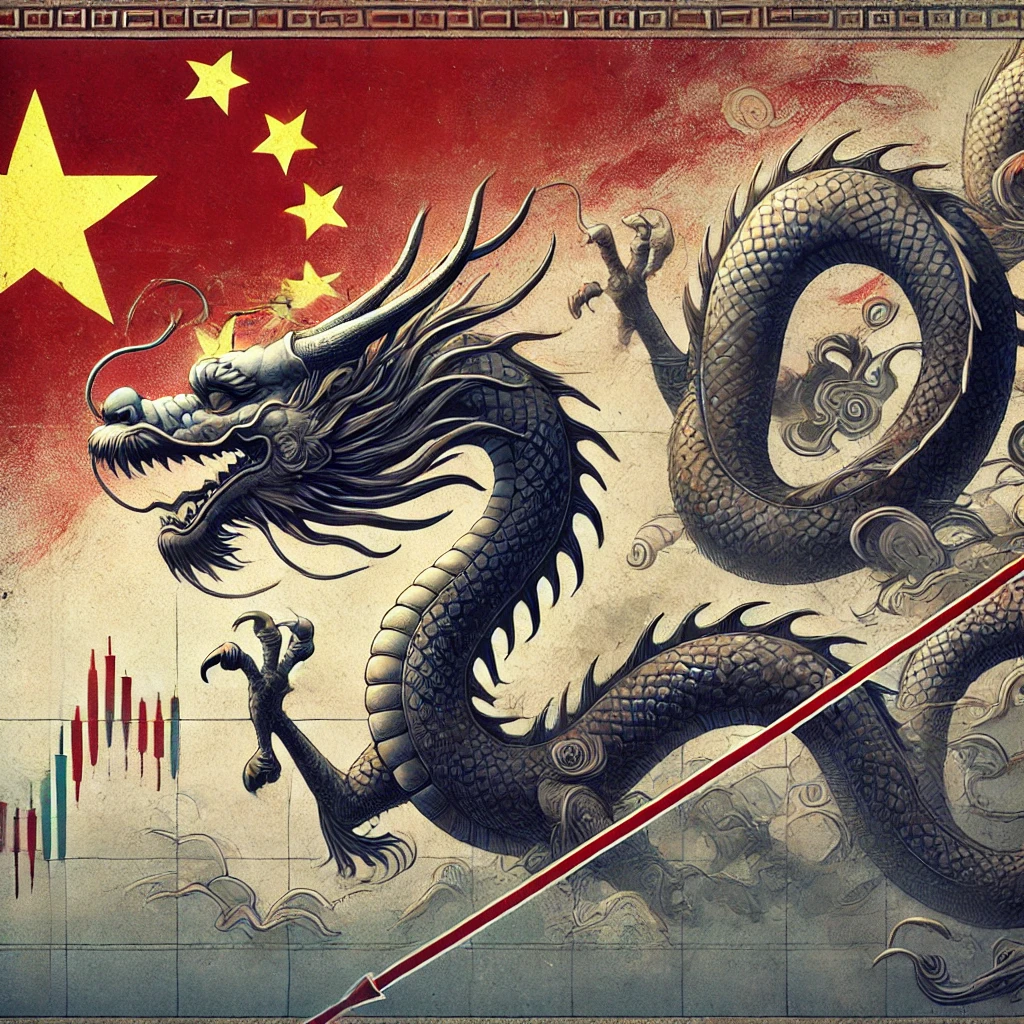
China’s two-year bond yield has seen a sharp decline in recent weeks, nearing the critical threshold of 1.00%. This unprecedented drop underscores rising concerns about deflationary pressures and the broader challenges facing the world’s second-largest economy. Such low yields, which are a reflection of market expectations for slower growth and subdued inflation, have become a focal point for policymakers and investors alike.
Why This Matters
The decline in bond yields is not merely a technical financial occurrence; it is a signal of underlying economic fragility. Bond yields generally represent the return investors expect for lending money to the government. When yields drop to exceptionally low levels, it often reflects increased demand for safer assets in times of economic uncertainty. In China, this trend highlights weakening confidence in the country’s growth prospects amid deflationary concerns.
Deflation, the persistent decline in prices for goods and services, is a particularly troubling development. It erodes corporate profits, discourages investment, and reduces consumer spending as people delay purchases in anticipation of lower prices. For an economy like China, which has long relied on robust domestic demand and industrial production, deflation poses a direct threat to economic stability.
The Broader Implications
The implications of China’s falling bond yields and the accompanying economic challenges extend into multiple dimensions:
- Impact on Economic Growth
A prolonged period of low bond yields and deflationary pressure could dampen economic growth, primarily by limiting the effectiveness of monetary policy.
- Why is this important? Low bond yields often signal that borrowing costs for the government and private entities are already low. The central bank, such as the People’s Bank of China, uses tools like cutting interest rates to encourage borrowing and spending. However, when yields are already so low, further rate cuts have diminishing effects.
- What does this mean? Imagine a scenario where a bank offers very low interest rates to attract borrowers, but businesses and individuals hesitate to borrow because they are uncertain about future profits or incomes. This is what happens in deflationary conditions—lower borrowing costs fail to translate into increased investment and consumption. For a layperson, this means economic activity slows, jobs become harder to find, and overall prosperity declines.
- Currency Stability
Low yields can weaken the Chinese yuan, making it less attractive to foreign investors. This could lead to capital outflows—when money leaves the country for higher returns elsewhere.
- Why does this happen? If bond yields in other countries are higher, investors will prefer those markets for better returns. A weaker yuan could also make imported goods more expensive for Chinese consumers, adding to their financial burden.
- What does this mean? For everyday people, a weaker currency may mean higher prices for imported items like electronics or fuel. For the broader economy, it creates challenges in managing inflation and stabilizing financial markets.
- Global Ripple Effects
China’s economic struggles are unlikely to remain contained within its borders due to its central role in global trade and investment.
- Why does this matter globally? Slower growth in China means it buys fewer goods from other countries, which hurts exporters, particularly in developing economies reliant on Chinese demand. Financial markets may also react to uncertainty in China, causing volatility worldwide.
- What does this mean for you? If you live in a country that trades heavily with China, your local economy might face slowdowns, job losses, or declining stock market values as the effects spread.
How It Is Being Dealt With
To address these challenges, the People’s Bank of China (PBOC) has introduced several measures aimed at stabilizing the economy. These include:
- Lowering Interest Rates: By cutting borrowing costs, the PBOC hopes to encourage businesses to take loans, invest in new projects, and hire more workers.
- Injecting Liquidity: The central bank has been pumping money into the banking system to ensure that financial institutions have enough funds to lend.
However, these monetary tools alone may not be sufficient. The root causes of weak demand—such as a struggling property sector, reduced consumer confidence, and high levels of debt—require broader solutions.
What More Can Be Done?
- Fiscal Stimulus: The government could step in with increased spending on infrastructure projects, tax cuts, or direct cash transfers to households to stimulate demand.
- Structural Reforms: Long-term changes, such as encouraging private sector growth, reducing overcapacity in certain industries, and diversifying the economy, are necessary to address deep-rooted issues.
- Boosting Consumer Confidence: Measures to support employment, improve social security, and stabilize the housing market can help rebuild trust in the economy.
China’s challenges are a complex interplay of monetary and structural factors, requiring a coordinated and robust response. Whether these measures succeed will determine not just China’s recovery but also its role in the global economic landscape for years to come.
An IS-LM Perspective
The dramatic fall in China’s bond yields and its broader implications can be examined through the IS-LM model, a cornerstone of macroeconomic analysis. This model helps in understanding the interplay between interest rates (as reflected in bond yields), aggregate demand, and monetary policy effectiveness. Read more about the theoretical backing in the next post, we will delve deeper into the IS-LM framework to unpack the underlying problems in China’s economy, explore why deflationary pressures have intensified, and analyze the limitations of current policy responses. Read it here.


[…] China’s recent economic trajectory has been marked by a sharp decline in its two-year bond yield, nearing the critical threshold of 1.00%. This alarming trend reflects growing deflationary pressures and questions about the effectiveness of monetary policy in stimulating growth. As policymakers grapple with these challenges, the IS-LM model offers a robust framework for analyzing the underlying issues and potential outcomes. Read more. […]